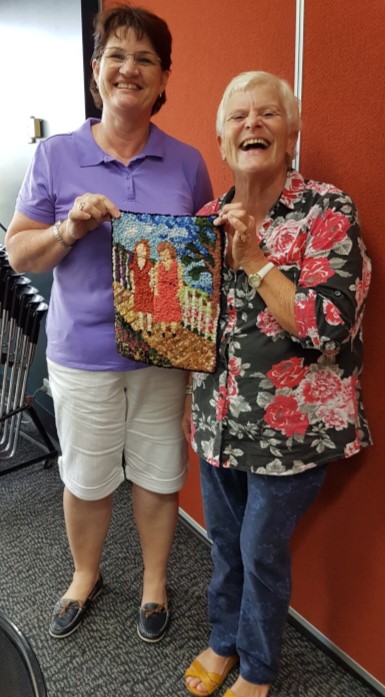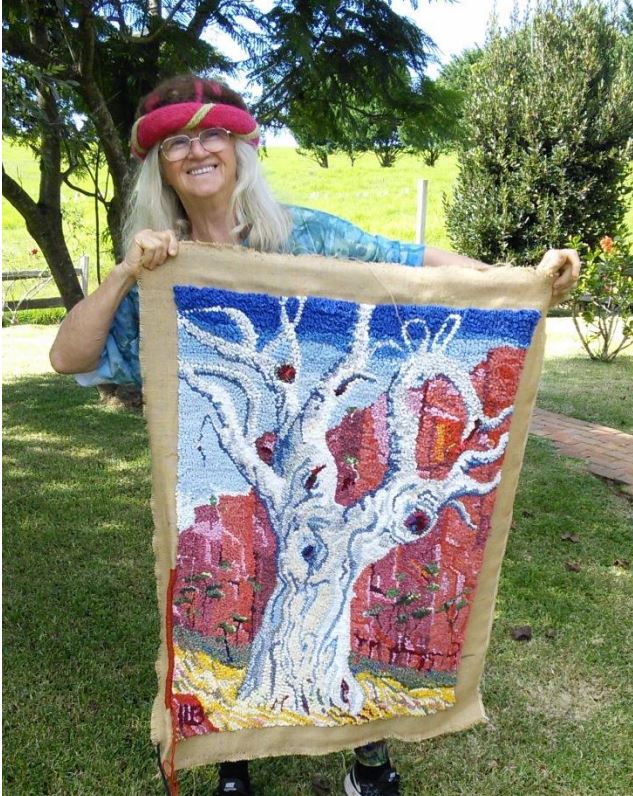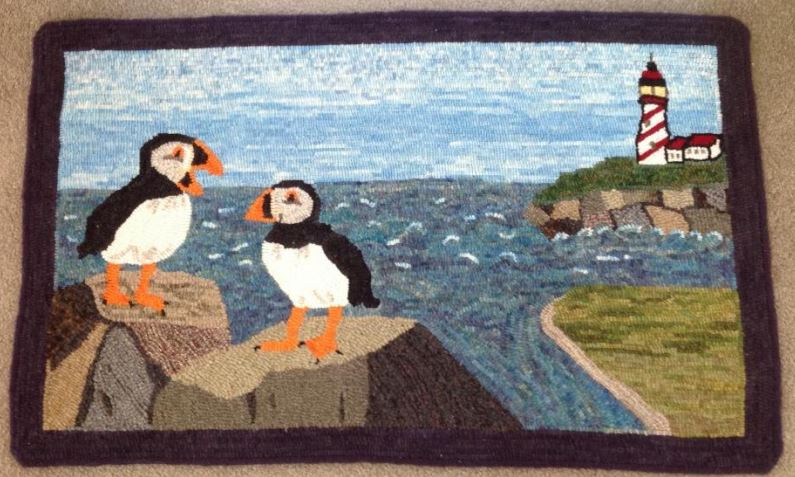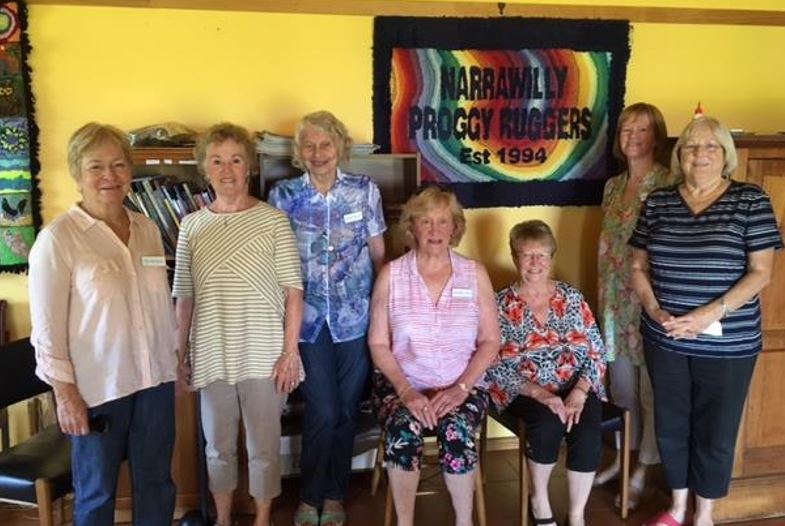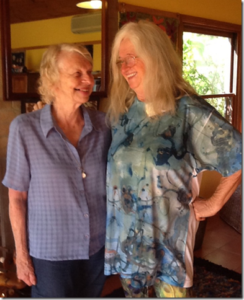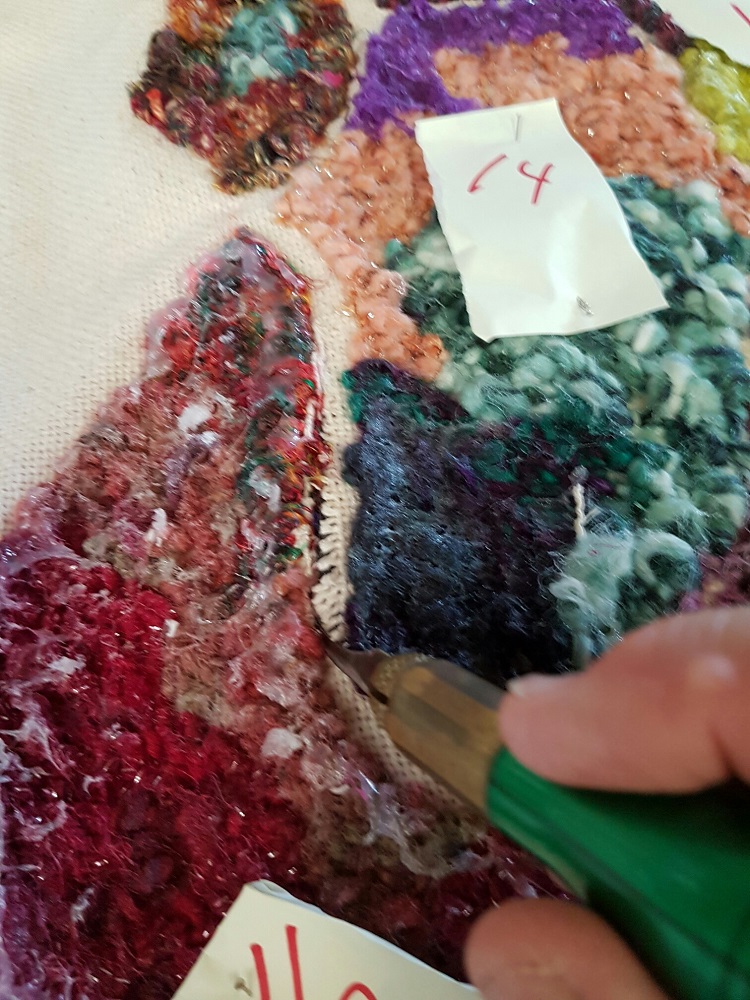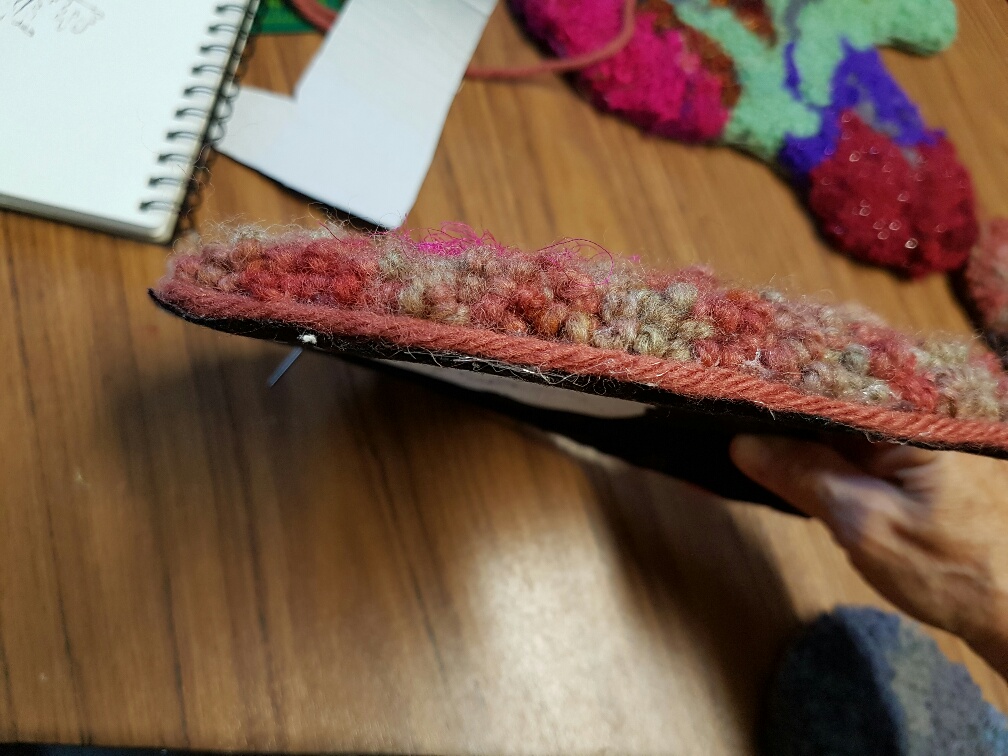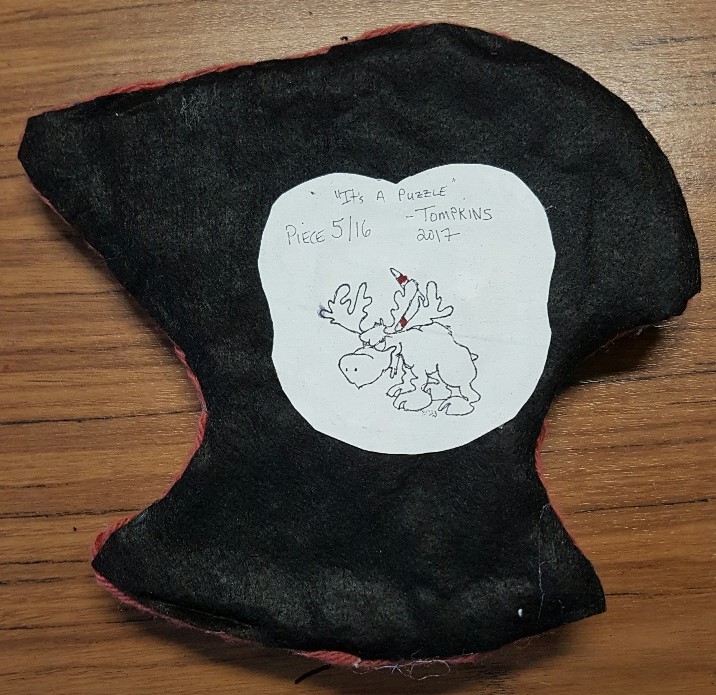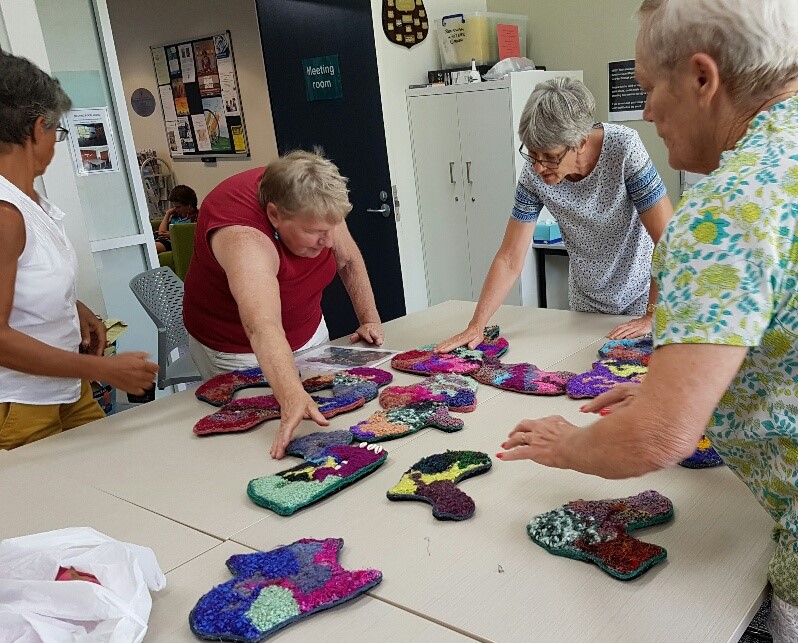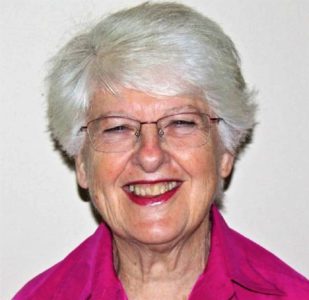ISSN 2007-001X
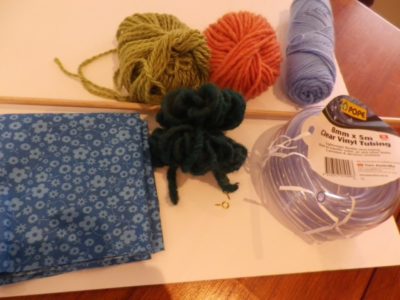
What do these items have to do with a rug inspired by a coat of arms?
Read on and learn a new finishing technique.
Stella Edmundson, a member of Judi Tomkins Sunshine Coast RugCrafters group, is relatively new to rug hooking however, her background in art, and a classical education, stands her in good stead when it comes to creating designs.
Stella has learned more than just rughooking techniques from the very creative Judi, a self-taught rughooker, who has worked in different art mediums. Judi encourages members of her group to think outside the box when it comes to framing their hooked pieces.
Here is Stella’s latest hooked work, a commission piece, destined for the USA.
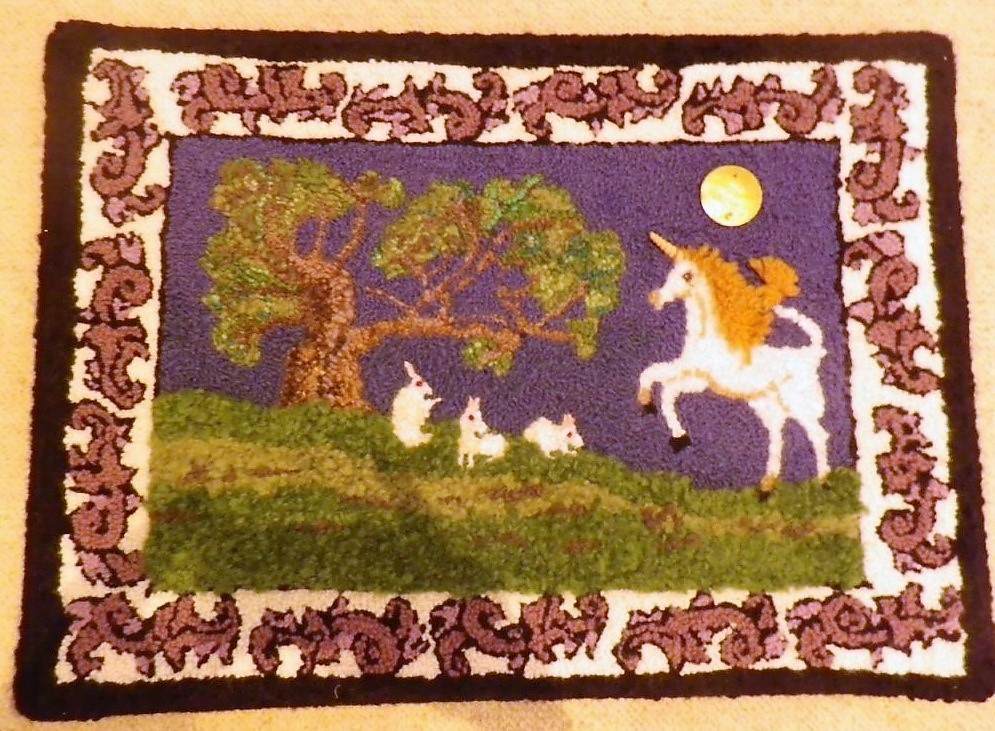
In her own words, Stella’s description of her commissioned work:
” My latest hooked rug is being sent to America by request of my sister who is a close friend of Germanic Kenesbeck descendants. It is inspired by the Kenesbeck coat of arms. I did not attempt to copy this family crest; for my hooking is not suitable for replicating anything. Instead I chose the unicorn which dates back to 1172!
The unicorn on the family crest is a realistic long legged colt with a lion’s mane and tail (this imbues the unicorn a lion’s strength and power). I also wanted to have some kind of border suggesting the elaborate exquisite filigree scrolling greenery on the bottom of the crest. Alas, I had to make do with a more simple pattern. I have found that including trees in my hooked rug adds energy so I searched the net for a drawing of a Germanic looking tree.
So, that was the idea I started with. The rug made itself. The unicorn turned out to be not realistic but heraldic (ditto with the rabbits). Unicorns are truly magic beasts representing innocence, sincerity, cleanliness, wisdom, peace and joy. Rabbits are often depicted in medieval unicorn tapestries for they share a reclusive nature with a deep love of nature.
The time is early spring now in Pennsylvania and New Hampshire. The setting is a deep dark night in a grassy wood lit by a radiant moon.”
Stella has invested in a new way of finishing hooked rugs which are to be hung; to give them a firm even edge, without the need of a frame.
Stella says …………
 “Here’s a step by step approach with images – these items were used during the finishing of a previous wall hanging.
“Here’s a step by step approach with images – these items were used during the finishing of a previous wall hanging.
1. Cut off excess backing fabric (foundation cloth) but leave enough to cover the rug
2. Place a mounting board the exact size of the rug on the back
3. Surround the mounting boards with cut dowels just under the width and length of the mounting board. Connect each corner by plastic tubing. This means there is no needs for nails and the corners are rounded.
4. Fold foundation cloth over the dowels and mounting board. Fold down from top & up from bottom first and then fold the across sides to cover the whole piece then sew all sides together.
5. With wool yarn matching the piece do rug stitch/whip stitch over the dowels and between the mounting board. Having a dowel in place insures even stitches.”
(Editors Note: The whip stitching should be done after “assembly” while the piece is laying on a flat surface; it helps to have the far edge weighed down – you can see Stella has a couple of very accommodating weights!
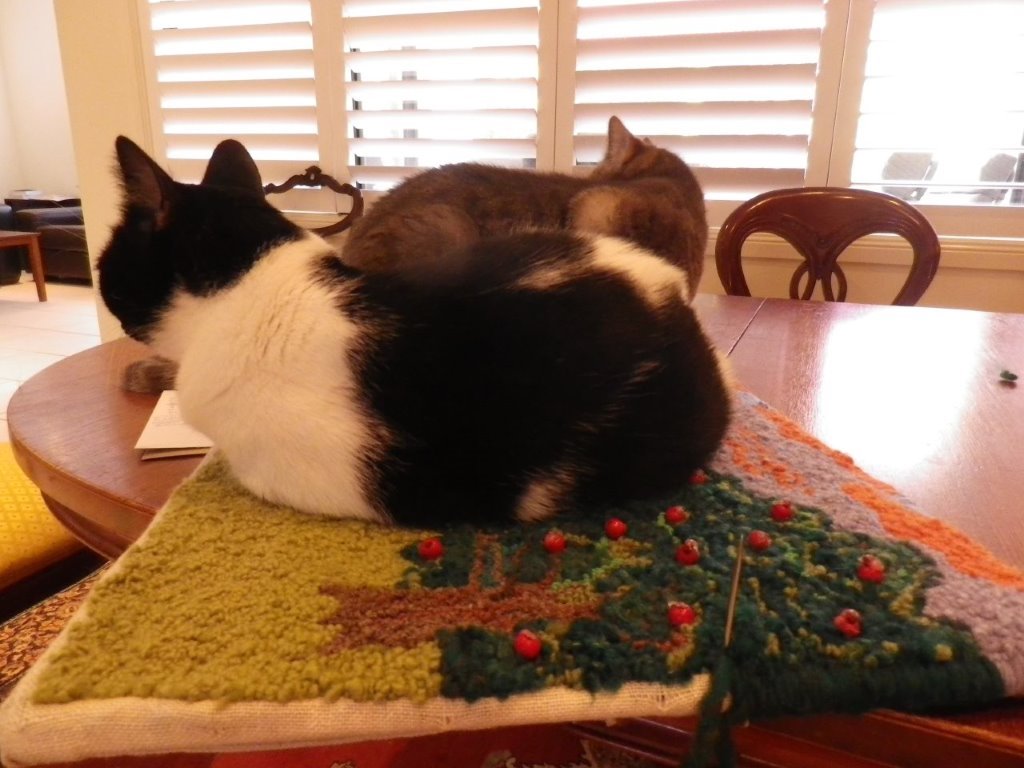
Below is Stella’s final comment regarding her technique. I might add, this finished back also provides a good surface to add an Artist’s Statement or at least (Name/Size of work, Name of Artist & date completed)
” 6. I like to cover the back with fabric which gives a polished finish.”
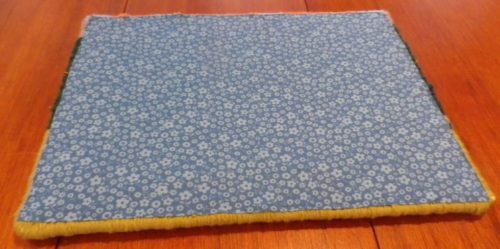
Well done Stella!
and thank you for sharing your technique with other rugmakers.

Jo Franco, Editor


